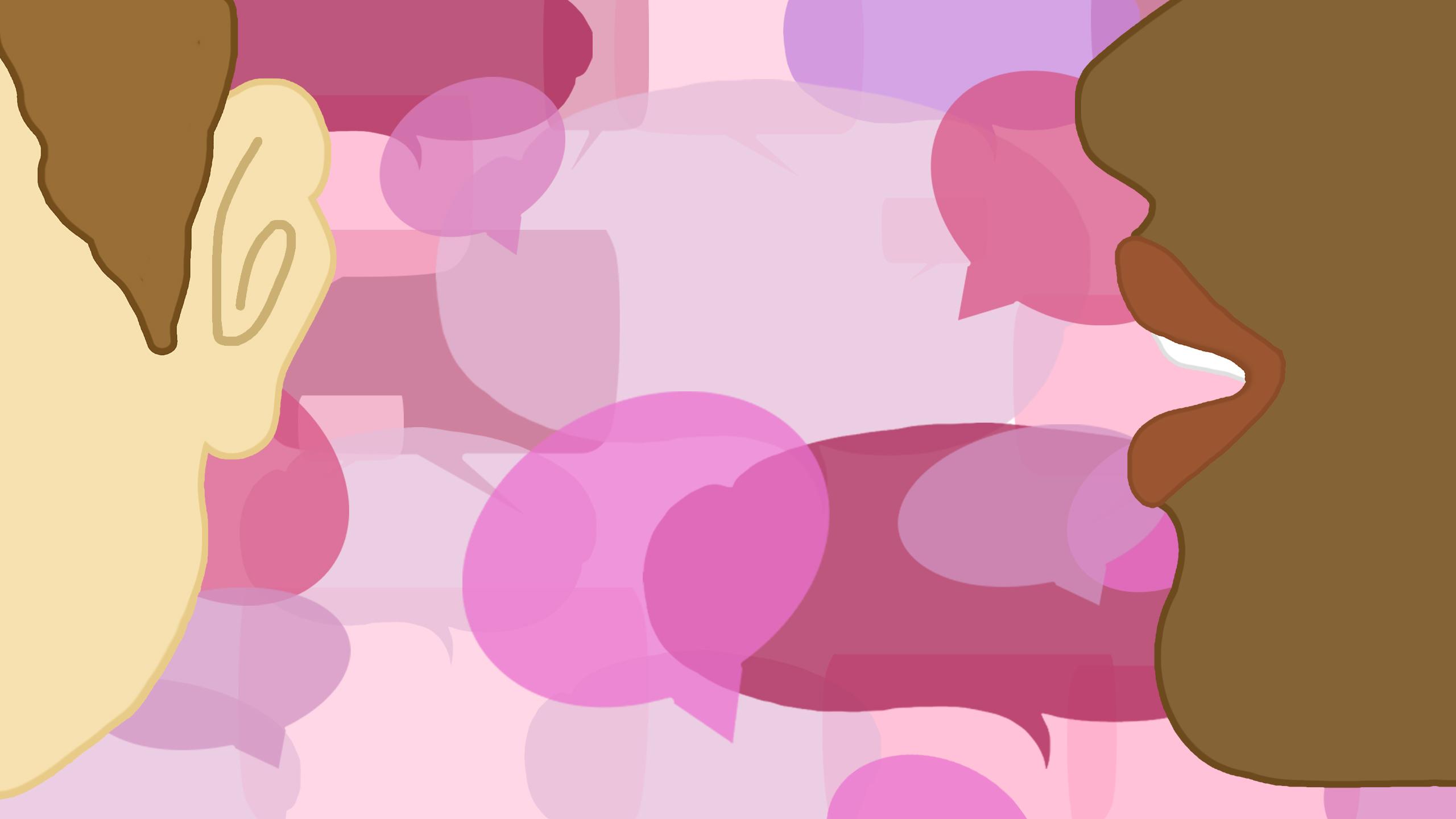TURNS OUT HIGH SCHOOL MATTERS AFTER ALL. THIS IS THE STORY OF HOW THE FRENEMIES AND CLIQUES OF OUR ADOLESCENCE SHAPE WHO WE ARE TODAY
Words by Urbi Khan
High school was not a fun time for me. When I started Grade 9 at Sinclair Secondary School in Whitby, I was a wallflower. I stuck in the background world and sank into self-indulgent blues by keeping to myself. I didn’t care about my studies or most of my classmates. I was in my own head most of the time, floating in and out of my friend circles and my classes. Identity tensions and self-doubt made me a tumultuous teenager.
By keeping to myself, I was left to experiment with self-expression. I took up playing the guitar and scribbled manic poetry, which I never shared with a soul. I considered myself a quiet artist with a hard edge. One time, I even wrote a song that included the lines, “I’m a maniac alien baby who just got left behind with some others, maybe.”
For first semester of Grade 9, my locker was next to a guy named Rick.* We had homeroom together, and I often caught him staring at me. He would look at me up and down, quizzically, as if he wanted to say something to me. Eventually, he did: he told me I looked like a kid he knew from the gifted program at his elementary school, and asked if we were siblings. While the comment was just a simple comparison, it was the first time anyone had made the connection between my fair-skinned brother and my brown-skinned self without any racial connotations. Coming from a complete stranger, it made me feel seen in a way that was touching. That was mine and Rick’s first interaction.
Even though Rick and I ran in mutual friend circles, he was clearly the popular one. He was far more involved in school, had a band and played lead guitar. Girls fawned over him, while I purposefully stayed on the sidelines.
Quickly, I came to learn that Rick and I had a lot in common. We were both artistic types. We had a mutual admiration for cartoons like Adventure Time and Rick and Morty, and we shared the same taste in music, vying for bands like Nirvana and The Velvet Underground. We also dressed in a similar fashion: we both wore skinny jeans that were a little too bright—he had a green pair and I had red ones. But eventually, the bickering started.
The first time he dared to cross me was when we were given an assignment to illustrate a children’s book in French class. I created a character that was as gloomy and angsty as I was—a hybrid between a snake and a dragon with a canine head. The book was riddled with lines like, Je pense que je suis très bizarre. I thought I was a genius for creating such a character. This caught Rick’s interest.
He approached me and took my book in his hands, placed his perfectly drawn dolphin monster book on my desk and proceeded to give me unsolicited advice—obviously declaring himself the art guru. He told me that the nose of my angsty teenage boy was crooked, how the eyes didn’t line up and that his paws gave him a distorted look. With my ears burning slightly and my fists clenched, I muttered to him through gritted teeth, “Did I ask for your damn advice?” He looked at me, flabbergasted and said, “Well, it’s good, but I think it could be better.” I responded by grabbing my book from his hands.
Thus began four years of bickering and petty competition. Our pompous attitudes clashed, which is what prevented us from being friends. I started referring to him as my nemesis. The irony was that we both needed to get off our self-created high horses. I hated to admit he knew more than me, and he hated to admit when I was right.
During our adolescent years, many of us were involved in high school politics and rivalries—these are age-old traditions. Films and shows have been made about them. In high school, people might have told you that whatever you were going through wasn’t going to matter five years from now, because things would change soon. But experts say being part of a high school clique, having a nemesis or other substantial drama that you felt was the end of the world is a part of adolescents’ psychological and social development.
Dr. Elise Cappella, an applied psychology professor at New York University, says friendships and social groups shape our behaviours and sense of identity during adolescence. Having social groups to look to is an important part of growing up as it helps young people in their search for identity and finding where they fit in. When we find people who identify similarly to us, we gain a sense of validation and feel better about who we are, Cappella says.
According to a 2015 study from the Journal of Youth and Adolescence on social groups, adolescents value status and wish to increase it among peers. The study also found that charismatic individuals tend to emerge in the group as a “leader,” and that competition can occur as a result of wanting to control the social group. And when the hierarchy is challenged, rivalries between peers ensue.

I n high school, Kadija Osman was one of those people who had friends from every clique. But having a friend in each group meant she had no choice but to hang out with a girl she couldn’t stand. Osman believed the girl in question was faking her niceness to her and her friends.
One day, Osman left class to go to the washroom and came back to find her bag on the floor and the girl in her seat. She remembers thinking, “All right…I’ve been disrespected.” She remembers that the girl “went off on her.”
“I was like, I don’t know what you think you’re doing sitting here with my friends and taking over. And then she started talking shit to me, like ‘Oh, you’re so dumb, oh, you’re ugly.’ I was like what, this has nothing to do with the situation.”
Osman, now a first-year journalism student at Ryerson, says she is more “chill now, and not territorial regarding her friends.” Her friend group separated when they all went to different universities, with her being the only one who came to Ryerson. Over time, she learned how to be comfortable being on her own. She goes to classes where she doesn’t know anyone, eats lunch by herself and has even found that she loves going to the movies alone. But in high school, the thought of doing any of those things would have terrified her, because she was so comfortable in her bubble of friends.
Andrea Gleeson, a high school English teacher at Milton District High School, says that it’s human nature to stick with a clique. As the adult in a classroom, she has to make sure that she “shakes it up” and matches kids who don’t necessarily talk to each other.
Gleeson believes that teachers should be proactive in creating a sense of community in the classroom and allow students to understand each other on a personal level. “We try to eliminate stereotypes by giving them more insights—a little more insight as to what the other person might be, what their vulnerabilities [are] or what they might be struggling with.”
Through this, students may open up to each other and realize that they are not so different. This challenges the territorial and social hierarchies that adolescents build for themselves.
According to the 2015 study, social groups can help adolescents make sense of the world around them. Since they tend to form relationships with like-minded people, they can create an echo chamber—a social group where their own views are reflected back to them.
This isn’t ideal because it shelters students from different perspectives. But the echo chamber allows adolescents go through the stressful process of finding out who they are in a more controlled environment, according to Cappella.

A t Keely Vaudrie’s high school, cliques were an integral part of the social structure. The jocks hung out with the jocks. The art kids hung out with the art kids. Vaudrie, who was the captain of three different sports teams, a regular performer in school theatre productions and an active member of numerous clubs, had a difficult time finding her place in the social structure. Since she couldn’t conform to one specific group, she found herself on the outskirts of all of them.
“There was this one corridor where if you didn’t eat lunch there, you weren’t considered a theatre kid,” she says. “And I thought that was silly. I was like, well, I’m a theatre kid, I’m in the plays, but I don’t want to just eat lunch here. And they said well, then you can’t be one of us.”
Vaudrie says she was “exiled” from the theatre kids from that day on, despite appearing alongside them in a play that semester. They would only talk to her on stage if absolutely necessary.
It wasn’t just the theatre kids who took lunchtime politics seriously. Vaudrie found that the she was also unwelcome among the girls on her sports team, because she didn’t consistently eat lunch with them either. Being one of the only openly queer women at her school only emphasized the fact that she was the “black sheep” in every social group. “I spent a whole lot of lunch periods in my car, crying,” she says.
Now a third-year nutrition and food science student at Ryerson, Vaudrie doesn’t look back fondly on her high school experience. But she also recognizes that the isolation she faced in high school has prepared her to be self-sufficient in her twenties.
“At the end of the day, I’ve only ever had my own company to fall back on and you know, as sad as it is, I wouldn’t change it for anything,” says Vaudrie. “I now go to school for something I know I am going to use; I have found my passion. I found my talent, essentially. And that was all because I was left to my own devices.”
Cappella says there is a natural tendency to want to belong and identify with a group. You’re then influenced by that group over time. If someone isn’t connected to a social group, then they don’t get the chance to “practice social skills [or] to struggle with social conflict.” She says schools should be trying to connect students to each other so that this learning can take place.
But Vaudrie wishes she could go back in time to tell her high-school self that for her, the people she went to high school with wouldn’t matter in a few years’ time—even though she still learned from the experience.
“I wouldn’t even tell myself it gets better because it didn’t get better,” she says. “I got better.”

T hough I hated the mound of earth that he stood on, I found myself constantly visiting Rick’s band practices and shows, up until Grade 12. We took the same classes and kept tabs on each other. I knew his girlfriends; I even told one of his girlfriends to either confront him or break up with him when she confided in me that he treated her like his inferior.
And yet I cared a bit about his life, and maybe he cared about mine, too. He would sometimes help me with my homework if he saw that I was struggling during study hall. Maybe he was just showing off and trying to prove that he was smarter than me.
Now I wonder if we were more frenemies than we were rivals. Maybe we enjoyed the friendly competition. Knowing someone like Rick in high school has made me pin-point parts of my own identity that I find endearing—but also superficial, like how I thought I was better than him even though we thought about things in similar ways and had similar interests. Whatever relationship I had with him wasn’t necessarily life-changing, but it was certainly helpful in getting to know myself.
Seven years have passed since that first semester of Grade 9. Rick and I have not spoken since our senior year of high school, though we follow each other on all social media. He studies math and still makes music, while I study journalism and still dabble with the arts.
My first article I ever wrote was for my high school newspaper. It was a feature on Rick and his band. At the time, no one even read the high school newspaper, but with Rick and his band on the cover, and my byline accompanying the story, we were both the talk of our high school the day the story was published. As much as I hate to admit it, Rick helped me come to terms with my own identity.

*Name has been changed











Leave a Reply